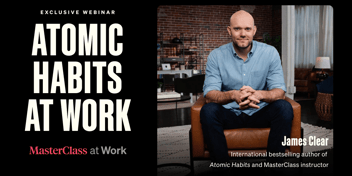We’ve all heard this stat: the average human attention span is 8.25 seconds, or shorter than that of a goldfish. If that’s truly the case, why is it that our favorite movies or books can hold our attention for hours at a time?
You might think it’s because humans have a high threshold for what is spectacular enough to keep us from getting distracted. But there are plenty of big-budget bombs and low-budget marvels in entertainment to prove that theory wrong. No. What keeps us engaged and wanting for more are things that we can connect with on an emotional level.
Seems obvious, right? Well, when it comes to how formal institutions approach learning, and the methods, materials and tools used to teach — to capture learners attention and communicate information — the importance of creating an emotional connection is often lost.
Isn’t learning about a thing easier, more enjoyable, and more inspiring when it’s something you’re emotionally invested in and can be passionate about?
It’s something MasterClass’s own Head of Learning Design and Strategy, Dr. John Scott, Chief People Officer, Mel Steinbach and VP, Creative, Ben Cotner think about daily, and will be discussing in an exclusive webinar coming up soon.
But we couldn’t wait that long. So, we’re dipping our toes in on the topic with this blog, and we’ve invited the team to comment as we go:
It’s hard to pay attention
You can probably describe the beats, in very specific detail, of your favorite movie scenes or a chapter from your favorite novel, or recite quotes from your favorite characters, even after just one sitting.
Yet when information is delivered in raw materials — such as a textbook — it takes a lot more effort to commit important details to memory. Even when learning a new idea or skill is critical to our personal success, we often rely on rote techniques (or devise new ones) to trick our brain into memorizing it. You know, I before E, except after C.
For more robust information, the brain needs something more substantial. Naturally, common techniques, such as mnemonic link systems, involve creating stories. After all, stories give us characters to relate to, stakes to care about, and a narrative that elicits human emotional connection — they get us to pay close attention.
Researchers at The University of Queensland found that, “Emotions are inherently linked to and influence cognitive skills such as attention, memory, executive function, decision-making, critical thinking, problem-solving and regulation, all of which play a key role in learning.”
The role of storytelling in employee L&D
The L&D function at organizations today is critical. Massive skills gaps are real and typical corporate learning suffers from three major challenges: low engagement, retention, and application.
It’s asking too much to expect employees to use The Story Method or create a Museum Palace just to make their learning and development resources digestible — they have enough on their plate.
What if our learning content and programs did that hard work up front? What if a series of courses meant to improve employees’ communication skills didn’t just teach them how to give feedback, but weaved in powerful stories to inspire them to do it well? What if your leadership training didn’t just prep new managers with aging best-practices, but gave them the tools to incorporate stories to humanize themselves, and relate to their team, when helping them solve a problem?
A good story is the expectation when we go to watch a movie or open a new book. Imagine the impact if employee L&D could deliver on that expectation too.
It’s time we reconnect the head to the heart, and reattach the emotional connection needed to activate the brain for learning the way our favorite stories do.
It’s time storytelling played a much bigger role in employee learning content and programs. Because stories are how we learn.
How to harness the power of storytelling
There is more information vying for our attention today than ever. Cutting through that noise to engage in learning new skills, especially at work, is hard. The emotional connection inherent in the stories we love create the foundation for memory formation — and incredible storytelling is at the center of every engaging, inspiring learning moment.
It’s why we’re hosting the first ever MasterClass at Work webinar event, Entertaining to Educate: Harnessing Powerful Storytelling in Professional Learning.
We invite you to join us as our Chief People Officer, Mel Steinbach, Head of Learning Design and Strategy, Dr. John Scott, and VP, Creative, Ben Cotner share lessons in storytelling for effective employee learning.
What you’ll learn:
- The five steps to teaching through stories
- Three storytelling principles for developing effective leadership skills through context, connection and communication
- Storytelling to inspire and motivate employees
To save your seat, please register here.
We hope to see you there!
The MasterClass at Work team

